The State of Conversational Commerce in 2023

Introduction
In the long history of business, conversations have always been an effective way to grow sales. Consider a consumer shopping for a new vehicle. After doing her research, she steps into the car dealership. The salesperson builds rapport with her, and she ends up purchasing the car – complete with some extras that align with her lifestyle. The dealership stays in touch with the consumer, and she returns a few years later to buy a car for her son.
Or, consider another consumer in the market for homeowners insurance. He ends up buying a policy from the agent that is able to quickly earn his trust via conversation – even if the policy he’s offering is a bit pricier than the alternatives. Over time, the agent is able to cross-sell auto and life insurance to the consumer.
Consumers value conversations – especially across certain product and service categories. As such, conversations continue to be a powerful way to drive sales.
Top Categories for Which Consumers Value Conversations
When shopping, do you find it helpful to have a conversation with an employee to help you make the right decision?
| Electronics | 92.01% |
| Automotive | 88.36% |
| Home & Garden | 82.65% |
| Travel & Hospitality | 82.19% |
| Sporting Goods | 80.14% |
But the ways consumers – especially younger ones – want to engage in these conversations is shifting. These folks are browsing and buying online. And increasingly, they also want to be able to engage with brands digitally – specifically through messaging channels and apps.
Brands and retailers that expect to reach Millennial and Gen Z must adapt. And the time to do so is now.
In this guide, we’ll explore what conversational commerce is and why 2023 is the year your brand must get on board to reach young shoppers. We’ll also share an 8-step framework for getting started on your conversational commerce journey.
What is Conversational Commerce?
The phrase “conversational commerce” is one that gained popularity in 2015, when Chris Messina published a Medium article on the topic. But what exactly does the phrase mean?
In the recent past, messaging channels were primarily used for post-sale service. For example, a consumer might initiate a conversation if they wanted help tracking a recent order – or to resolve a problem with something they recently purchased.
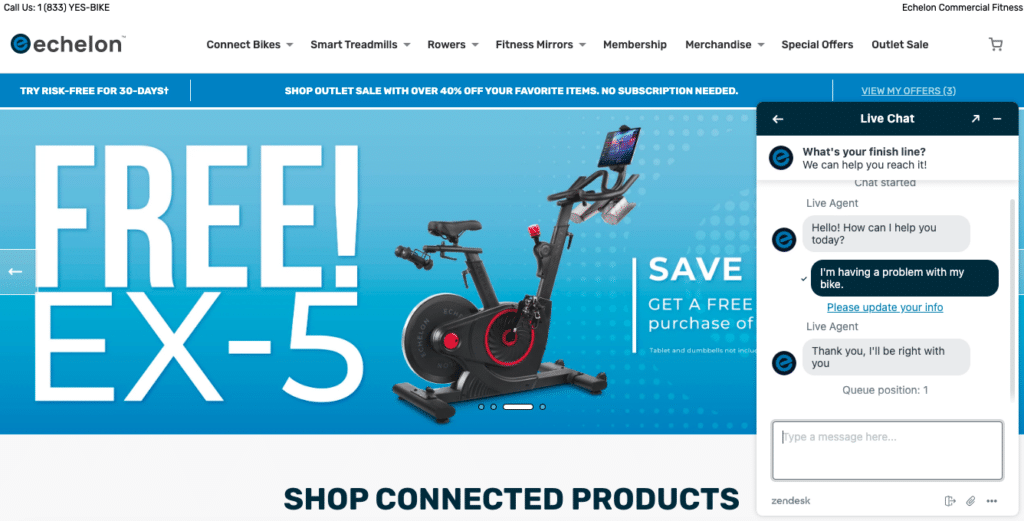
Don’t get us wrong: post-sale service is still an important use case for conversational channels. But increasingly, the most progressive brands are also leveraging these channels as a means to drive sales – a practice that’s referred to as conversational commerce.
Essentially, conversational commerce is the practice of engaging with consumers via digital messaging channels with the ultimate goal of making a sale. The best brands leverage conversational commerce across all phases of the customer journey.
- Awareness: Starting a dialog and building rapport at the start of a customer’s journey.
- Consideration: Helping shoppers understand your brand, products, and services and why your offerings are the right choice for their needs.
- Decision: Leveraging conversations to help shoppers overcome objections and hesitations so they can make confident purchase decisions.
- Retention: Engaging existing customers to foster loyalty – and cross-sell and upsell when appropriate.
- Advocacy: Fostering relationships with customers so they tell their family and friends about your brand – and share their feedback by writing reviews.
When Chris Messina coined the term “conversational commerce,” it seemed like a pipe dream. Sure, the concept made sense. But fueling all those conversations required a lot of human resources – making it a costly, time consuming endeavor.
Today, AI is empowering brands and retailers to make conversational commerce a reality – without sinking a ton of resources into it.
Top Conversational Commerce Channels
Gen Z and Millennial shoppers have much different habits than their older counterparts. Successfully reaching these younger shoppers is a puzzle many brands have yet to solve.
Tried and true tactics that work for other generations simply won’t cut it. Instead, the best brands are leveraging conversational commerce channels to reach Millennials and Gen Z’ers wherever they are.
The phrase “conversational commerce” may conjure up images of live chat on a brand’s website. This is certainly an important channel for conversational commerce. Per Salesforce, 42% of consumers prefer online chat. Some of the most progressive brands also offer video chat to enhance the human connection.
But conversational commerce doesn’t stop there.
A growing portion of brands leverage popular messaging apps to reach young shoppers, including:
- Google’s Business Messages
- Apple Business Messages
Social media sites and apps are some of the most popular destinations on the web – especially among Gen Z and Millennial consumers. As such, the most customer centric brands are tapping into social media channels to engage with consumers, including:
- SnapChat
- TikTok
Leveraging AI and Human Interaction to Drive Maximum Impact
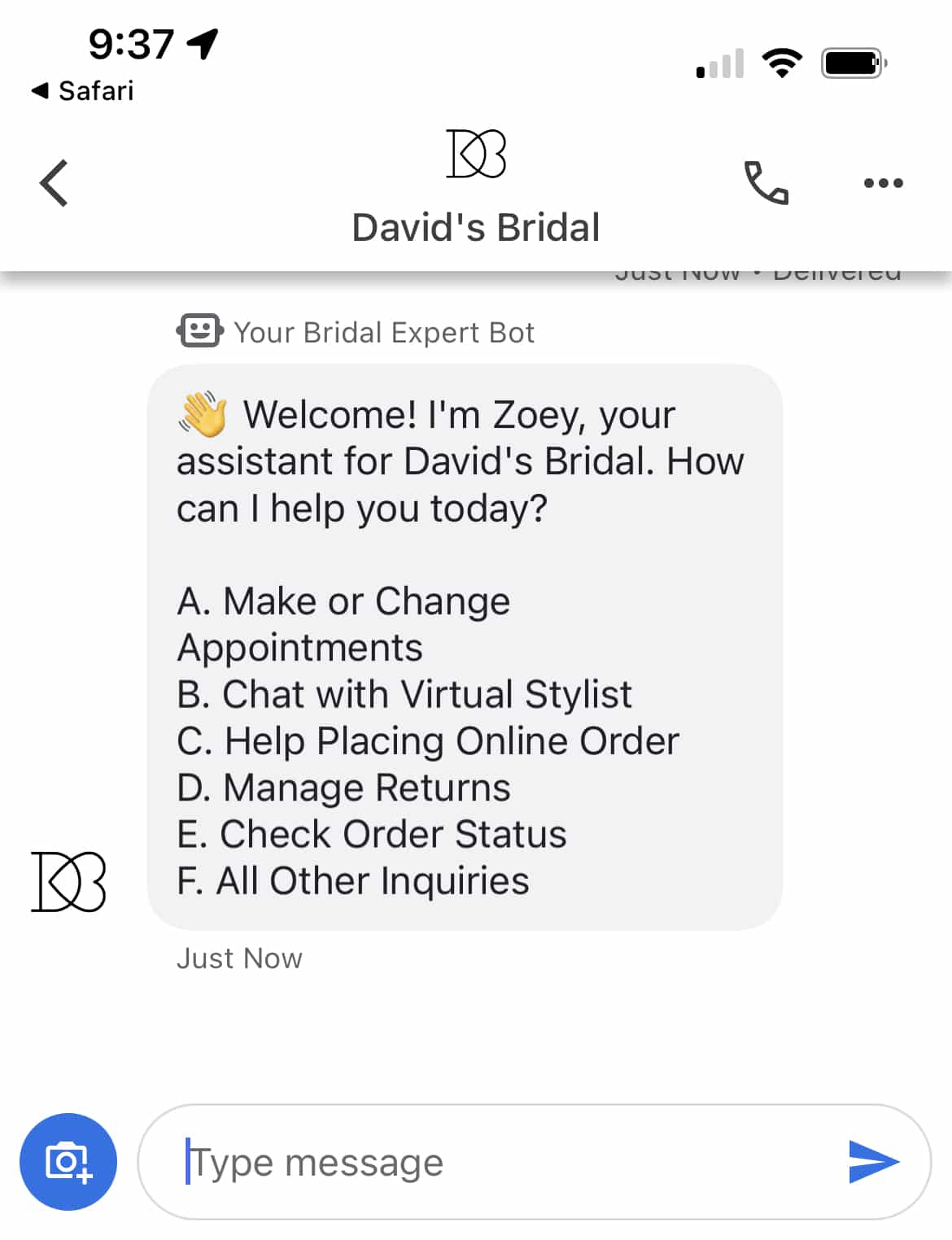
The brands that are most successful with conversational commerce are those that rely on a combination of automation and live-person interaction.
What do we mean by automation? Think chatbots or digital assistants that are developed to answer common questions and complete simple tasks. For example, a consumer might use a chatbot to find the closest store location or set an appointment.
The term “chatbot” might cause some to cringe. And that’s understandable. In the past, chatbots left a lot to be desired. Building flows for these digital assistants was a clunky, manual process. Essentially, a developer had to imagine all possible paths a conversation could take. And then they had to implement these paths with AI building blocks. This took a lot of time and effort – and was far from foolproof.
But AI has come a long way. New technology makes it quicker and easier for brands to create and deploy chatbots and digital assistants. Plus, it’s easier for AI to learn conversational flows, which means these tools can more effectively deliver personalized, context-specific, and “human-like” responses and assistance that moves customers through the funnel.
What’s more, AI lightens the load of agents, which is key as case volumes increase. According to an article for Execs in the Know, leveraging AI in conversation commerce can “conservatively shift 7-10% of current contact center volume to self-service almost immediately, and deliver significantly decreased agent handle times.”
While AI is increasingly powerful, human interaction is still a necessary component of conversational commerce – especially for complex matters. For example, a consumer might leverage live chat on a party supplier’s website to get personalized recommendations for an upcoming event from a party planning expert.
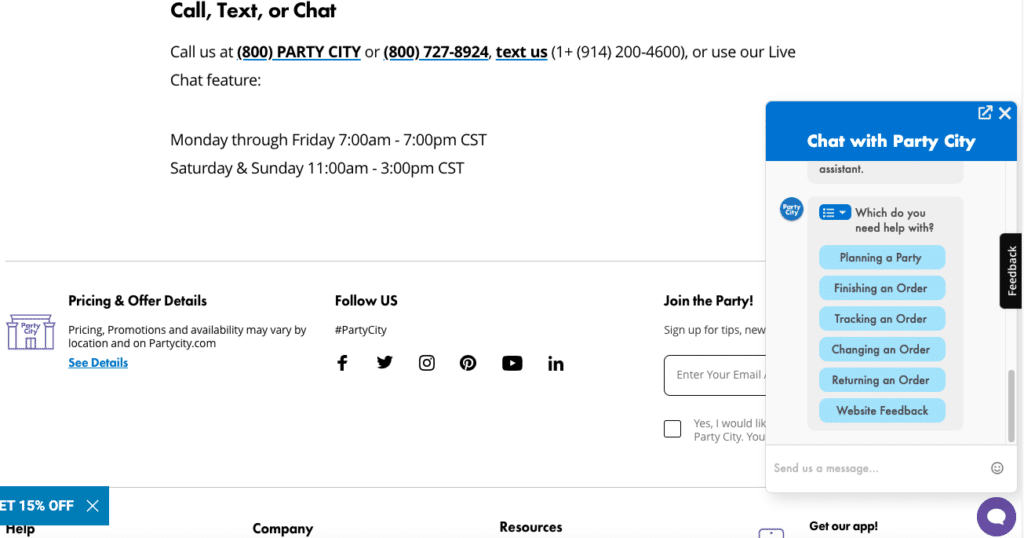
By combining automation with the human touch, brands are well positioned to deliver great experiences – and drive sales.
Why 2023 is the Year for Conversational Commerce
There are so many hours in the day. So you may be wondering if conversational commerce is a trend worthy of investment.
In a word, yes.
Conversational commerce isn’t just a buzzword or passing fad. Rather, it’s becoming a key channel for driving sales – especially among younger, hard-to-reach customers.
And it’s poised for significant growth. Juniper Research predicts that global spend for conversational commerce over-the-top (OTT) channels – including WhatsApp and WeChat – will grow from $13.3 billion in 2022 to $25.1 billion in 2023. That’s an 89% YOY increase.
If you’re not convinced, here are six factors that serve as proof that 2023 is the year to invest in conversational commerce.
1. Ecommerce Continues to Grow
Many consumers shifted their spending to online channels during the height of COVID. And for many, their pandemic-era habits are sticking around. According to Digital Commerce 360, US eCommerce grew nearly 11% in the third quarter of 2022.
In addition, a growing portion of those online sales are taking place on a mobile device. By 2025, Insider Intelligence predicts that mobile commerce (also known as m-commerce) will account for nearly 43% of total e-commerce.
Consumers – especially younger ones – are browsing and buying online. Brands must have a strategy in place to initiate conversations and deliver value via digital channels, too.
2. Shopper Expectations are Higher Than Ever
Of course, consumers expect great products and services. But they also demand great experiences. Research from Salesforce tells us 88% of consumers feel the experience a company provides is just as important as its products or services.
Specifically, consumers expect their interactions with a brand to be:
- Quick: 83% of consumers expect to interact with someone immediately when they contact a company.
- Seamless: 78% of consumers have used multiple channels to start and complete a transaction.
- Personalized: 73% of consumers expect companies to understand their unique needs and expectations.
If a brand doesn’t deliver, those consumers won’t hesitate to leave. Per Salesforce, 71% of consumers have switched brands at least once in the last year.
The good news? Conversational commerce channels are built to help brands meet (and even exceed) the lofty expectations of today’s shoppers. This drives sales and loyalty.
3. Consumers (Especially Younger Ones) are Already on Board
The best brands understand they must meet shoppers where they are. And where they are is on chat apps. According to an article for the Economist, four-fifths of mobile time is now spent on chat apps. Young shoppers are particularly drawn to chat apps.
Consumers are using these apps to keep in touch with family and friends. But increasingly, they’re also using messaging channels to connect with brands.
Per an article for PC Magazine, 85% of mobile phone users prefer to connect with brands via messaging, rather than emails and calls. They want to leverage messaging throughout the purchase journey to discover products, ask questions, manage returns, and yes – even make purchases.
In addition, according to Meta, three-quarters of consumers will message a business to make a purchase or reservation.
Clearly, many consumers – especially young ones – have already adopted conversational commerce channels. If you’re not equipped to engage with them via these channels, you’re leaving money on the table.
4. The Third Party Cookie is Going Away
The death of the third party cookie is something that’s been foretold for years. But soon, it’ll be a reality.
When third party cookies go away, marketers will lose a rich source of data that helps fuel personalized experiences and interactions. Personalized experiences will still be possible (and expected), but it’ll require brands to prioritize first party data collection.
This may seem like a friction-filled feat. Especially when 82% of consumers are “highly concerned” with how their data is collected and used.
However, many consumers are willing to share their information – if the circumstances are right. According to Salesforce research, 61% of consumers are comfortable with brands using relevant personal information in a transparent and beneficial manner. And per a survey from Yotpo, 82% of consumers are willing to share their data with a brand to receive personalized products, recommendations, discounts, or services.
Conversational commerce channels are an effective way to bridge the gap to start collecting more first party data.
Let’s say a customer service rep provides a great conversational experience, but the customer isn’t yet ready to buy. The rep can request information from the consumer. That information will be added to a central record (such as Salesforce), which will empower the brand to deliver personalized communications and recommendations that’ll eventually lead to a sale.
Brands can also leverage AI to request information from customers via chatbots and digital assistants. Again, this data can be used to fuel bespoke experiences that move customers through the funnel.
5. Customer Care Teams are Stretched Thin
Demand for digital engagement has increased. According to Salesforce research, 57% of customers prefer to engage with companies through digital channels.
But in many cases, resources remain the same, leaving customer care agents to juggle large caseloads. It’s no wonder why 78% of customer service agents say it’s difficult to balance speed and quality.
A strong conversational commerce strategy can lighten the load. Chatbots can be developed and trained to address simple questions and requests around the clock. This leaves live agents with more time to time to deliver high quality experiences.
6. Tech Giants are Investing in Messaging
Tech giants like Google and Meta keep a constant pulse on consumer trends and preferences. And they only focus their attention on the most promising initiatives.
Google and Meta are investing in their conversational commerce offerings – which means they must see some big potential. In addition to enhancing their organic offerings, there are also new, paid advertising options. The brand develops an ad as usual, but rather than directing the consumer to a landing page or form, the consumer is invited to start a conversation with the brand.
You can read more about the future of conversational commerce ads in this recent blog.
Your Game Plan for Diving into the World of Conversational Commerce
Conversational commerce will only continue to grow. In order to meet shoppers’ expectations – especially those of Millennials and Gen Z’ers – you’ve got to embrace it.
But diving into the world of conversational commerce can seem like an overwhelming endeavor. There are myriad channels and technology out there – and for many of your staff, it can be a new way of selling.
Here at 1440, we recommend taking a crawl-walk-run approach to conversational commerce. Start small, gain your footing, and then optimize and expand accordingly. It’s better to take on a small number of channels and master them than to take on several and fail to meet shoppers’ expectations.
With that in mind, here are eight practical actions all brands must take to set themselves up for success with conversational commerce.
1. Establish Your Goals
There’s a popular saying that “without a goal, you can’t score.” It’s true with just about anything in life and business – including conversational commerce.
The first step is to determine what your goals are for conversational commerce. Think about what you hope to provide by adopting conversational commerce channels. Some examples might include:
- Guidance on purchases
- Cross-sales and upsells of existing customers
- Direct order placement
- Collecting feedback and data
- Order and shipment information
Your goals will lay the foundation for everything that follows.
2. Choose Your Channels
After you’ve established your goals, it’s time to determine which conversational commerce channels align with those goals. Some of your options include (but aren’t limited to):
- Google’s Business Messages
- SMS
- Live chat
- Video chat
- Facebook Messenger
- Instagram Messenger
It’s important to consider when your shoppers already are. For example, if you’re looking to attract young consumers, it makes sense to consider social media channels. On the other hand, older shoppers may prefer live chat.
Though it’s tempting to take on a bunch of different channels right out of the gate, this isn’t the best approach. It’s better to start small and expand from there.
Remember: the best brands leverage a combination of automation and live human interaction, which brings us to our next point…
3. Leverage Artificial Intelligence
Chat bots are a great tool for handling simple questions and inquiries that move prospects through the funnel – while freeing up your agents for more complex requests. And many consumers are happy to use them. Our own research found that 56% of consumers feel a digital assistant can answer some of their questions and get them to the right live person, if needed.
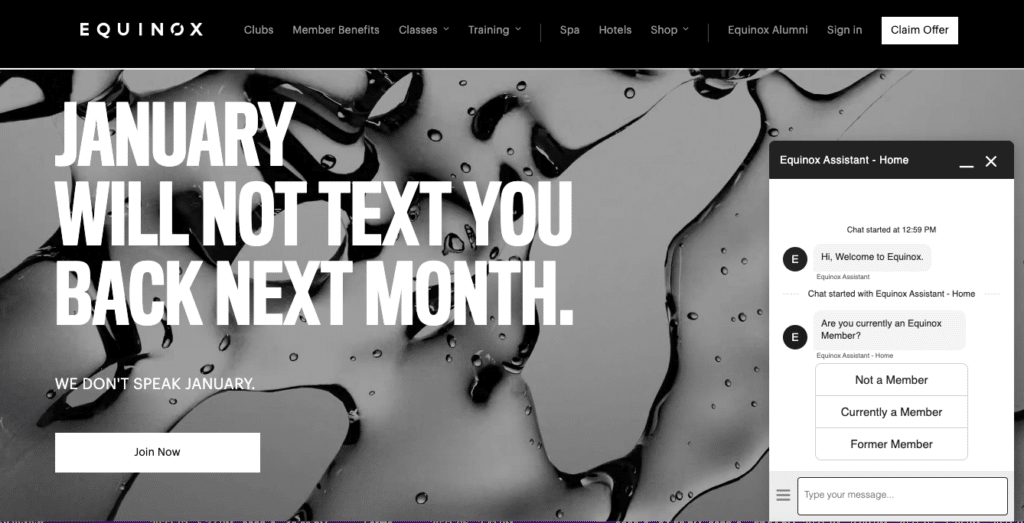
What’s more, AI is constantly evolving. That means chatbots are easier to set up than ever. And, they can be trained quickly to provide personalized, human-like interactions.
If your brand uses Salesforce, setting up an Einstein Bot is a simple way to dip your toes into the world of conversational commerce. Your bot will guide shoppers during the purchase journey – and free up your internal resources.
4. Establish SLAs
A service level agreement is a documented commitment of how quickly you’ll get back to customers. Be sure to establish SLAs for each of the conversational commerce channels you adopt.
How quickly should you commit to responding? The faster the better! As mentioned earlier, 83% of consumers expect to interact with someone immediately when they contact a company.
That said, don’t make a commitment you can’t keep. It’s better to set realistic expectations – and then meet or exceed them.
5. Invest in the Right Technology
Increasingly, consumers are leveraging digital channels to engage with shoppers. But managing all of these channels in a way that meets shoppers’ expectations can be challenging. Each conversational channel uses a different platform – and managing several can be clunky and time consuming.
A better approach is to start managing your conversational channels from a single platform. If your business already depends on Salesforce, this is the best place to manage conversational commerce channels.
But why Salesforce?
Salesforce provides you with a single source of truth into each of your customers. The conversations you have with customers are another layer of data that fuels your 360 degree view. That 360 degree view powers better, more personalized omnichannel experiences.
In addition, managing conversational commerce channels in Salesforce saves time. Customer care agents aren’t switching back and forth between a bunch of different systems. Instead, they can manage all channels through a single platform. That means they’ll have more time to delight customers.
But how can you start managing conversational channels in Salesforce? Today, a growing number of brands are investing in technology like Messaging Studio from 1440. With Messaging Studio, brands can manage conversations across the most popular conversational commerce channels – right within Salesforce.
6. Establish Conversation “Launch Points”
After determining what conversational commerce channels you’ll support, it’s important to let consumers know how they can engage with you via these channels. At a minimum, be sure to incorporate these entry points:
- A live chat icon on your dot com
- The contact us page of your website
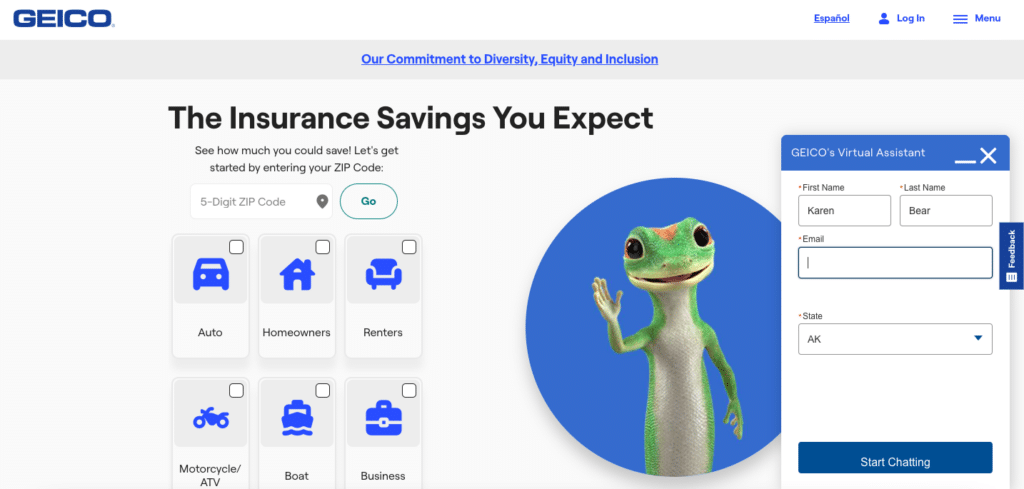
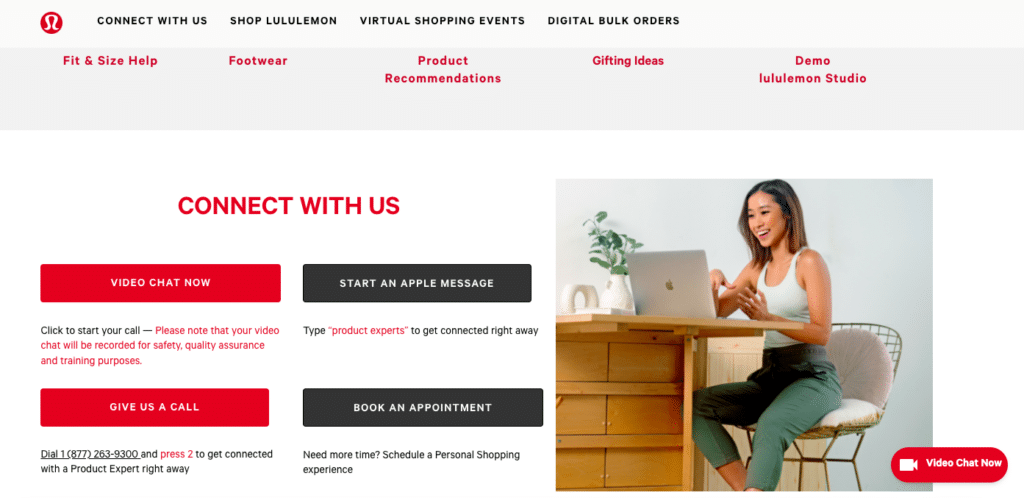
But don’t be afraid to get a bit creative. To get the juices flowing, think of where your customers are – and how you can entice them to engage in a conversation. For example, give “click to chat” ads a try. Or, incorporate QR codes in print ads that consumers can scan to initiate a conversation to get more information.

7. Empower Your Staff
For many of your team members, selling via conversational commerce channels is uncharted territory. Be sure to set them up for success. One key way to do this is to equip them with the tools they need to effectively manage these channels – which we covered in point #5. The right technology will enable them to manage conversational commerce channels from Salesforce. And, it’ll provide them with the right data about customers so they can deliver seamless, personalized experiences.
But it’s also important to provide ongoing training to ensure they understand consumers’ expectations – and have the skills needed to meet them.
Remember: happy, well-equipped employees make for happy customers. According to Salesforce research, 85% of decision-makers believe there’s a direct link between employee experience and customer experience.
8. Measure and Optimize
Once you’ve launched your conversational commerce program, don’t put it on autopilot. Instead, measure on an ongoing basis.
For starters, take a deep dive into what’s going well – and what could use some improvement. Be sure to measure your progress toward your goals and how well you are (or aren’t) meeting SLAs.
In addition, be sure to keep a pulse on how your customers are engaging with you via conversational commerce channels. Customer behaviors and preferences are always evolving, and it’s important to keep pace.
Then, use these insights to optimize your program. That might include adding an additional channel – or making changes to one you already support.
In 2023, Leverage Conversational Commerce to Reach More Gen Z and Millennial Shoppers
Conversational commerce isn’t just a retail buzzword. It’s a viable strategy to connect with consumers and drive sales. This is especially true if you’re looking to connect with those hard-to-reach Gen Z and Millennial shoppers.
Conversational commerce will continue to grow – whether or not you embrace it.
Make this the year you get on board with conversational commerce. With the right strategy and tools, you’ll be well-positioned to engage with shoppers, drive sales, and increase lifetime value.